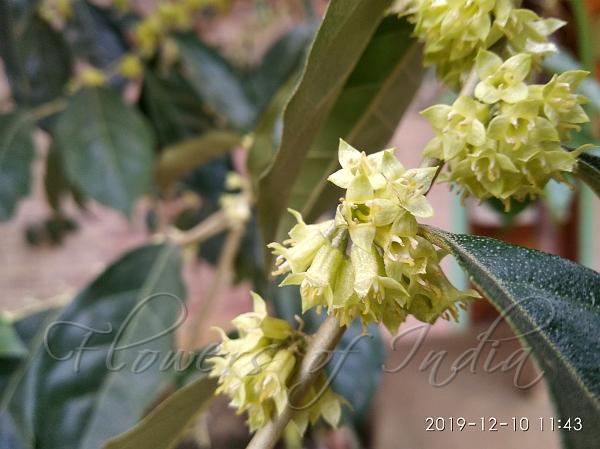|
| Eastern Silverberry |
|

|

| File size | 713209 |
| Original date | 12/10/19 11:43 AM |
| Resolution | 2048 x 1536 |
| Flash | Flash did not fire, auto |
| Focal length | 3.81mm |
| Exposure time | 1/50s |
| Aperture | 2.2 |
| Focus Distance | |
| Metering Mode | Center weighted average |
| Camera make | Xiaomi |
| Camera model | Redmi 5 |
| Sensor type | OneChipColorArea |
|
|
|
|
Photo: |
Botanical name: Elaeagnus conferta Family: Elaeagnaceae (Silverberry family)
Synonyms: Elaeagnus javanica, Elaeagnus nepalensis, Elaeagnus arborea
Synonyms: Elaeagnus javanica, Elaeagnus nepalensis, Elaeagnus arborea
Eastern Silverberry is a sprawling shrub with axillary branches
sometimes spine-tipped. It is distinct from the species found in South India,
the South Indian Silverberry.
The two species can be easily distinguished by their leaves.
Leaf-stalk are 5-11 mm long, leaf blade elliptic
to elliptic-oblong, 4.7-11 x 2.3-4.2 cm, below with scales dense, silvery
or brownish, above becoming hairless, lateral veins 5-11 per side of
midrib, base rounded or wedge-shaped, margin obscurely wavy, tip shortly
tapering or nearly pointed. Flowers are borne in up to 8-flowered clusters
in leaf axils. Flower-stalks are 1-3 mm. In the fruiting phase the
flower-stalks alongate to about 9 mm. Flowers are greenish white. silvery
brown scaly. Flowers (techically calyx) are tubular, 4-angled, 4.5-9.5 mm,
constricted above ovary; lobes ovate, 2-3 mm, spreading out. Stamens are inserted in the
throat or on narrow annulus, protruding; filaments about 1 mm;
anthers 0.8-1.2 mm, style hairy. Fruit is ellipsoid, 1.3-1.8 x 0.7-1 cm.
Fruit becomes orange when ripe, is edible and somewhat acidic in taste.
It is eaten with salt and also pickled. Eastern Silverberry is found in Andaman Is.,
NE India, Bangladesh, China South-Central, East Himalaya, Nepal, SE Asia,
Sri Lanka, and West Himalaya, at altitudes below 2100 m.
Flowering: October-February.
| Identification credit: Thingnam Rajshree | Photographed in Imphal, Manipur. |
• Is this flower misidentified? If yes,